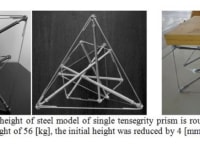Seismic isolation is a technique that has been used around the world to protect building structures, nonstructural components, users and content of this structures from the damaging effects of earthquake.
In addition to buildings, seismic isolation can be used for the protection of crucial structures such as bridges, LNG tanks, offshore platforms, nuclear and other power plants as well as military installations etc.
My innovative idea focuses mainly on the application of passive seismic isolation for buildings.
In general, isolators are classified into two categories: elastomeric and sliding bearings.
Traditional, elastomeric and lead-rubber seismic isolation bearings provide isolation only from the horizontal components of ground shaking. Similar to elastomeric bearings, the vertical stiffness of lead-rubber bearings is typically thousands of times larger than the horizontal stiffness. In turn, the vertical stiffness of sliding bearings is several times larger than elastomeric bearings. Moreover, the characteristic strength of friction pendulum bearings is affected by heating.
In general, past efforts to achieve a three-dimensional isolation have not produced a practicable and cost-effective system.
Tensegrity structures are self-stressed in a distinctive geometrical forms, and composed of axially loaded elements; usually cables and bars. Therefore, they are materially and mechanically efficient structures. The elastic response of the examined structure may switch from stiffening to softening, depending on the applied prestress, the geometry of the system and the magnitude of the external load.
By Robert Skelton: “A tensegrity system is a stable connection of axially-loaded members. A Class k tensegrity structure is one in which at most k compressive members are connected to any node.” The condition of a continuous network of members in tension has been implicitly preserved.
It is currently apparent that among the tensegrity systems also exist a cable-bar cells with a discontinuous network of cables. It is possible to insert a separate set of cables inside the tensegrity elementary cell and to establish a self-stress state of equilibrium. In this connection, the author of present solution suggested to assume a new Class θ (Theta) tensegrity systems.
The present solution concerns an isolator having the form of the Class θ = 1 triangular tensegrity prism. If θ = 1 then only one compressive member is connected to any node.
The freestanding configurations of Class θ = 1 tensegrity prisms have static indeterminacy equal to 1, and kinematic indeterminacy equal to 10. In general, they can be effectively stabilized through the application of pre-tensioning forces. It seems obvious after initial load attempts of the mechanical models, that a good theoretical variant of the single isolator will be a super-stable and soft configuration, i.e. without the self-stress. Triangular bases of the prismatic isolator permit to a significant relative movement, both plane and rotary motion.
It can be concluded from preliminary studies that the presented isolators exhibit valuable features for preventing of buildings and equipment damage owing to earthquake. Moreover, they are relatively inexpensive, easy to build, operate and exchange.
Like this entry?
-
About the Entrant
- Name:Zbigniew Bieniek
- Type of entry:individual
- Patent status:pending





